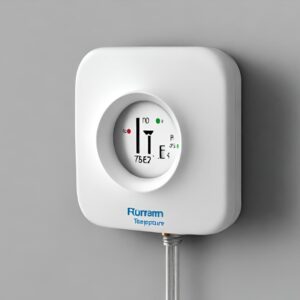In the era of technology-driven innovation, the word “sensors” takes center stage in our homes. Smart homes, once the stuff of science fiction, are now a reality, thanks to the seamless integration of sensors. These unassuming devices have transformed our living spaces into intelligent, responsive environments. In this blog post, we embark on a journey to explore how Mamac sensors are the backbone of smart homes, enhancing convenience, energy efficiency, security, and even our well-being.
The Rise of Smart Homes
The concept of smart homes has evolved from a futuristic dream to a widespread reality. These homes leverage advanced technologies to enhance our daily lives, making them more convenient, efficient, and secure.
In today’s smart homes, sensors play a pivotal role in orchestrating various tasks and functions. These electric sensors are the senses of your home, collecting data from the environment and enabling automated responses that cater to your preferences.
The Role of Sensors in Smart Homes
Schneider electric sensors serve as the central nervous system of smart homes. They are responsible for gathering data from various sources, such as motion, light, temperature, humidity, and more. This data is then processed to make intelligent decisions, ensuring that your home responds appropriately to changing conditions.
Whether it’s adjusting the thermostat based on occupancy, turning off lights when a room is empty, or alerting you to potential security breaches, sensors make it all possible. They are the silent, efficient maestros behind the scenes, orchestrating the symphony of a smart home.
Key Sensor Applications in Smart Homes
The applications of electric sensors in smart homes are vast and diverse. Some notable examples include:
Home Security: Motion sensors and door/window contact sensors are integral components of smart security systems. They detect unauthorized entry and trigger alarms or notifications.
Climate Control: Smart thermostats equipped with temperature and humidity sensors optimize heating and cooling, ensuring comfort and energy efficiency.
Lighting and Automation: Light sensors and occupancy sensors adjust lighting levels based on natural light and occupancy, reducing energy consumption.
Appliance Control: Many appliances, such as refrigerators and washing machines, are now equipped with sensors to optimize performance and notify users of issues.
Health and Well-being: Wearable devices with sensors monitor vital signs, track activity, and even detect falls, providing peace of mind for elderly residents and their families.
Enhanced Living Experience:
The integration of sensors enhances the living experience in numerous ways. Imagine arriving home on a scorching summer day to find your thermostat has already cooled the house to your preferred temperature. Or picture a home that adjusts its lighting to create the perfect ambiance for movie night without you lifting a finger.
Energy Efficiency and Sustainability
One of the most compelling aspects of electric sensors in smart homes is their role in energy conservation and sustainability. By continuously monitoring conditions and user behavior, sensors can optimize resource usage.
For instance, they can detect when a room is unoccupied and adjust heating, cooling, and lighting accordingly. Over time, this not only results in energy savings but also contributes to a more sustainable lifestyle by reducing carbon footprints.
Privacy and Security Concerns
As we embrace the convenience of smart homes, it’s essential to address privacy and security concerns. The constant data collection and connectivity of sensors can raise questions about data privacy and potential vulnerabilities.
To mitigate these concerns, it’s crucial to follow best practices for securing smart home systems, such as using strong passwords, regularly updating firmware, and limiting data sharing with third parties.
Future Trends and Innovations
The world of smart homes is constantly evolving, and sensors continue to be at the forefront of innovation. The future promises even more sophisticated sensor technology and integration.
Artificial intelligence (AI) and machine learning will play a significant role in analyzing the wealth of data generated by sensors. This will enable predictive actions, such as preheating your oven based on your dinner schedule or suggesting energy-saving adjustments.
Accessibility and Inclusivity
While smart home technology offers incredible benefits, it’s essential to ensure that it is accessible and inclusive for everyone, including individuals with disabilities. Sensors can be harnessed to create environments that are more accommodating, providing greater independence and quality of life for all residents.
Conclusion
Electric sensors have ushered in a new era of modern living, where our homes respond intelligently to our needs and preferences. Smart homes are no longer a futuristic concept but a reality that enhances our comfort, convenience, and sustainability. As sensor technology continues to advance, we can expect even more exciting developments in the realm of smart living. While we embrace these innovations, let’s also remain vigilant about privacy and security, ensuring that our smart homes truly become the safe, efficient, and inclusive havens we envision.




